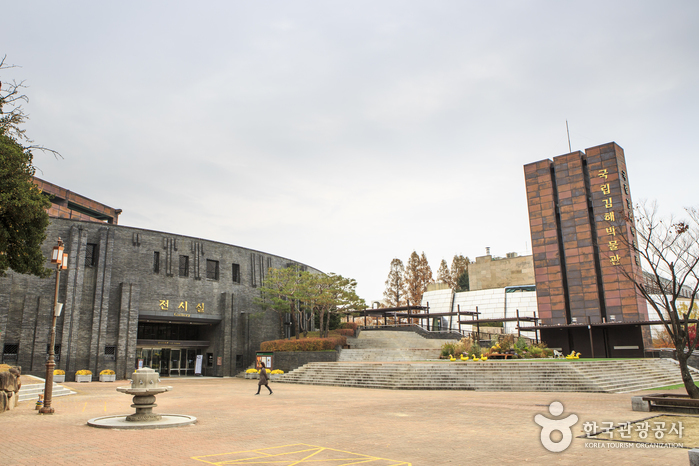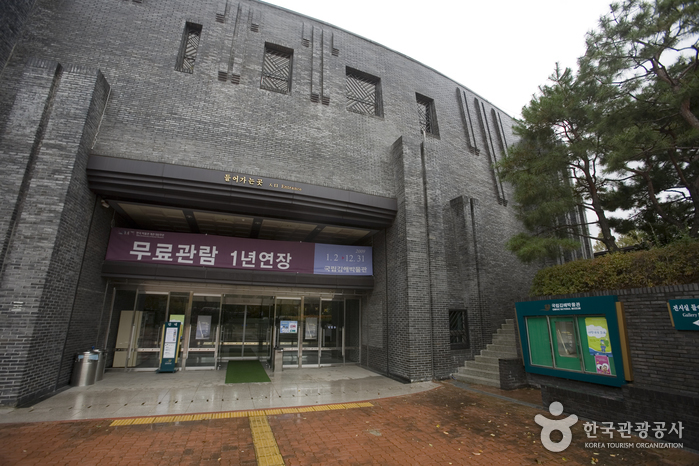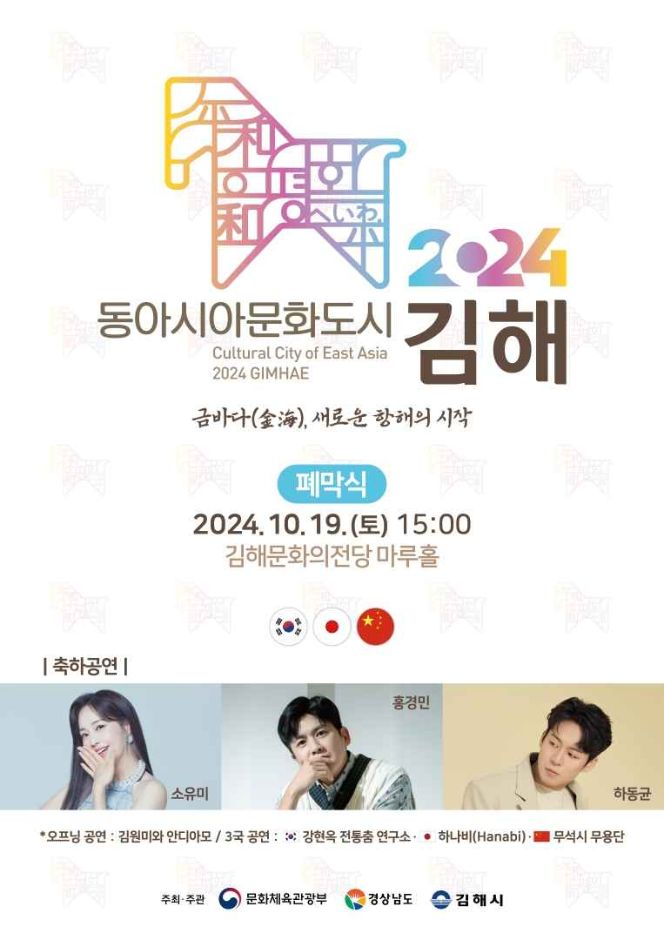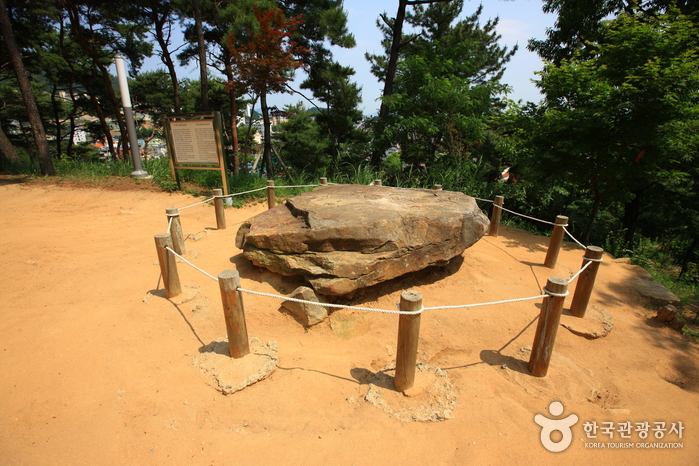Gimhae National Museum (국립김해박물관)
19.3Km 2024-01-23
190 Gayaui-gil, Gimhae-si, Gyeongsangnam-do
The Gimhae National Museum was opened on July 29, 1998, in order to research and preserve the cultural heritage of the ancient kingdom of Gaya. The museum is at the foot of Gujibong Peak in Gimhae-si, the spot where the kingdom is believed to have been founded. The museum exhibits the cultural assets of Gaya, as well as cultural relics from the prehistoric age in the Busan and Gyeongsangnam-do areas, and the cultural heritage of Byeonhan, which was the foundation for the growth of Gaya.
The exterior of the museum is made using black bricks representing iron ore and charcoal famous during the Gaya Kingdom. There are two exhibition halls, while the walkway to the halls have approximately 1,300 artifacts in display.
Seollal Traditional & Cultural Event of Gimhae National Museum (국립김해박물관 설맞이 전통문화행사)
19.3Km 2020-03-21
190, Gayaui-gil, Gimhae-si, Gyeongsangnam-do
• 1330 Travel Hotline: +82-2-1330
(Korean, English, Japanese, Chinese) • For more info: +82-55-320-6821
To greet Seollal, one of the biggest national holidays in Korea, Gimhae National Museum hosts a “Seollal Traditional & Cultural Event.” During the event, visitors can take part in traditional activities and view regional cultural assets.
Mh Modern House - Homeplus Gimhae Branch [Tax Refund Shop] (MH 모던하우스 홈플러스김해)
19.5Km 2024-04-23
2078, Gimhae-daero, Gimhae-si, Gyeongsangnam-do
-
Homeplus - Gimhae Branch [Tax Refund Shop] (홈플러스 김해)
19.5Km 2024-04-18
2078, Gimhae-daero, Gimhae-si, Gyeongsangnam-do
-
Olive Young - Homeplus Gimhae Branch [Tax Refund Shop] (올리브영 홈플러스김해점)
19.5Km 2024-06-27
2F, 2078, Gimhae-daero, Gimhae-si, Gyeongsangnam-do
-
Culture City of East Asia Gimhae (동아시아문화도시 김해)
19.7Km 2024-10-18
2060 Gimhae-daero, Gimhae-si, Gyeongsangnam-do
+82-51-781-2437
The Culture City of East Asia is an agreement to promote diverse cultural exchanges between Korea, China, and Japan. Under the value of respect for cultural diversity among Korea, China, and Japan, each year one city from each country is designated as a “Culture City of East Asia” to practice the spirit of “East Asian consciousness, cultural exchange and convergence, and understanding of other cultures.” (Source: Culture City of East Asia website)
Gimhae Arts and Sports Center (김해문화의전당)
19.7Km 2022-12-29
2060, Gimhae-daero, Gimhae-si, Gyeongsangnam-do
+82-55-320-1234
The Gimhae Arts and Sports Center is a performance hall for high-class performances. Maru Hall is a multi-purpose theater that also contains a moving orchestra shell with a sound reflection board for a smaller concert hall inside the theater. Nuri Hall is an experimental theater for performances in a variety of themes. The center also features the outdoor theater Aedureum Madang, Yunseul Art Gallery, Media Center, Sports Center, and Aram Learning Center, as well as a café and restaurants.
Café Sea & Tree (씨앤트리 카페)
19.9Km 2024-02-26
808 Ilgwang-ro, Ilgwang-eup, Gijang-gun, Busan
Sea & Tree is a distinctive café and bakery located right on the beach. It encompasses multiple levels, with the café areas stretching from the first to the fourth floors, and a rooftop area on the fifth. The café offers an extensive array of drinks and baked goods. For weekday brunch, they offer Sea & Tree Platter, a special toast salad platter, which includes toast accompanied by various sides and a salad. Each floor of the café boasts a panoramic view of the East Sea. The first floor features an open outdoor setting, while the third and fourth floors are designated as no-kids zones. Additionally, this café operates a pension and a swimming pool, enhancing the leisure options available to visitors.
Gimhae Gujibong Peak (김해 구지봉)
19.9Km 2021-07-13
Gusan-dong, Gimhae-si, Gyeongsangnam-do
+82-055-331-0086
Gujibong Peak in Gusan-dong, Gimhae in Gyeongsangnam-do is believed to be the birthplace of King Suro, the founder of the Gaya kingdom. The peak was originally named Gusubong (“gu” meaning “turtle,” “su” meaning “head”) after its resemblance to the head of a turtle. The flat part of the peak (the turtle’s “head”) is home to the Tomb of King Suro. On the summit is a southern-style dolmen dating back to the 4th century BC that consists of 5 or 6 support stones and a large cover stone measuring 2.5m in diameter. The cover stone bears the inscription “Gujibongseok,” said to be written by Han Ho.
Gujibong Peak is considered a sacred place by the local people because, according to legend, it is the place where the creation of the Gaya Kingdom took place. During the Japanese colonial rule, the “neck” of the turtle was destroyed by the construction of a mountain road. Years later, a pedestrian road was built to rejoin the neck and restore the feng shui of the mountain.
Olive Young - Yangsan Deokgye Branch [Tax Refund Shop] (올리브영 양산덕계점)
19.9Km 2024-06-27
19, Beonyeong-ro, Yangsan-si, Gyeongsangnam-do
-


![Mh Modern House - Homeplus Gimhae Branch [Tax Refund Shop] (MH 모던하우스 홈플러스김해)](http://tong.visitkorea.or.kr/cms/resource/56/2885956_image2_1.jpg)
![Homeplus - Gimhae Branch [Tax Refund Shop] (홈플러스 김해)](http://tong.visitkorea.or.kr/cms/resource/59/2885959_image2_1.jpg)



 English
English
 한국어
한국어 日本語
日本語 中文(简体)
中文(简体) Deutsch
Deutsch Français
Français Español
Español Русский
Русский